There are two words used in describing glass types. These two words are often confused by dealers and collectors alike. One word is Opalescence, and one word is Iridescence. Opalescence is what this price guide is all about. Iridescence deals with another type of glass called Carnival Glass. The following photos show the colors of Opalescent Glass that could be found during the "Victorian" and "Edwardian" era. The Edwardian Era lasted from 1901 to 1910, during which Edward VII (1841-1910) reigned as King after Queen Victoria died in 1901. 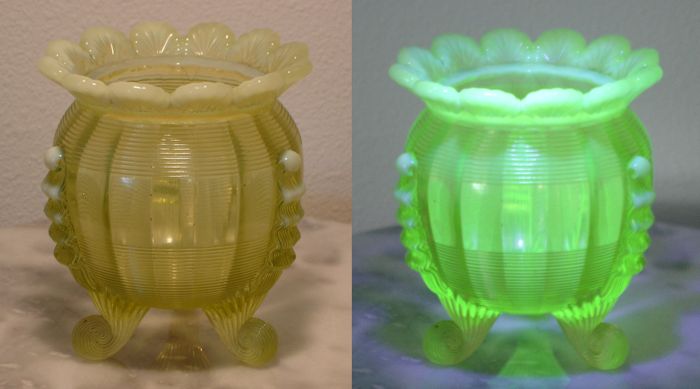 Vaseline This color seems to be more on the Yellow side than Green. It will fluoresce under a "Black Light" as shown due to Uranium Dioxide in the glass. Some companies referred to this color as "Canary", and some called it "Vaseline", and some companies called it "Yellow".  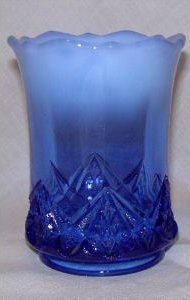 Blue The item on the left is simply "Blue" Opalescent. This color is sometimes called Sapphire Blue. Northwood made a pattern called "Diamond Spearhead" shown on the right. The blue color they used for that pattern was a darker color which we refer to as "Cobalt Blue" 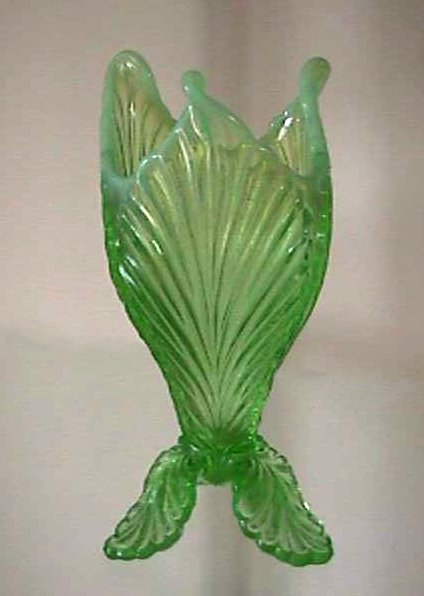 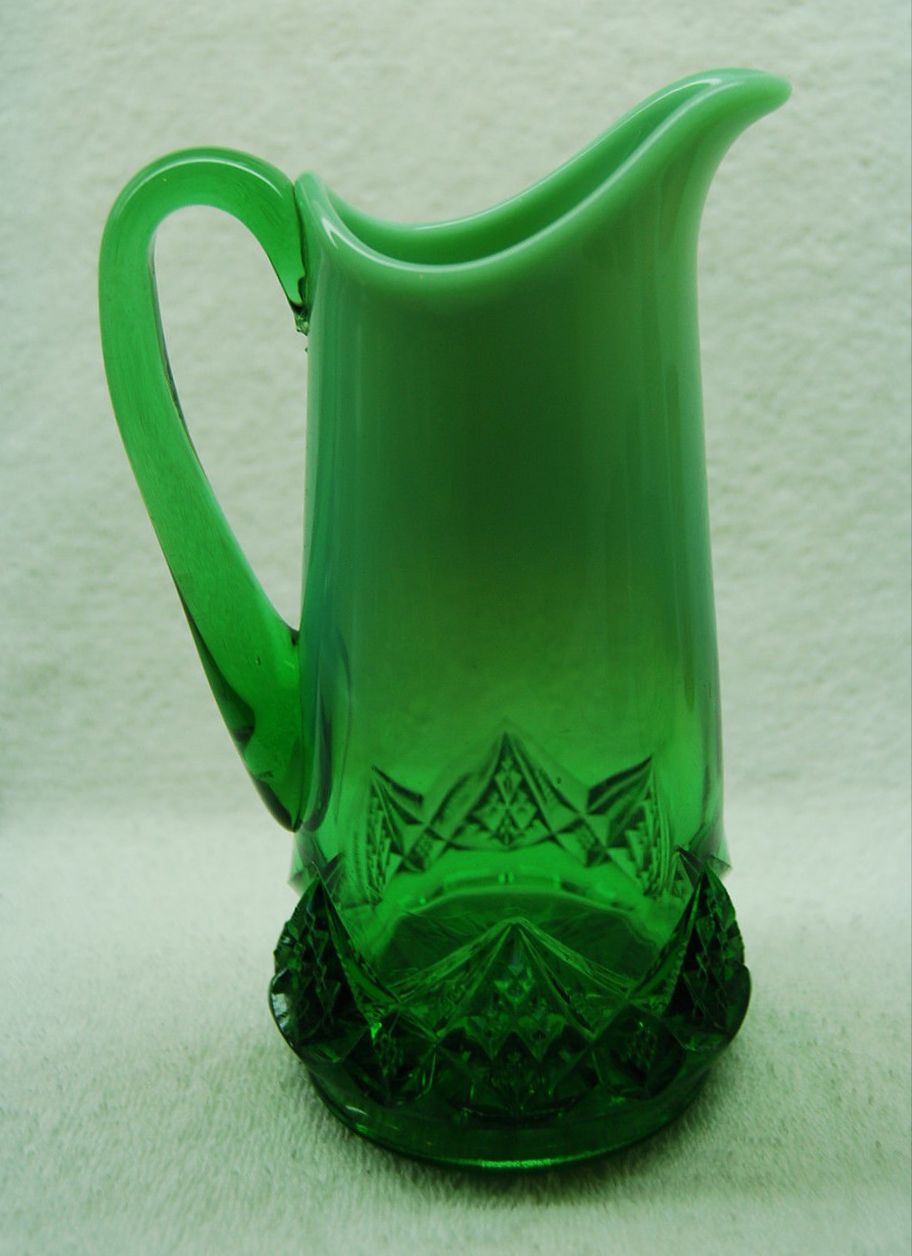 Green Some Green glass will fluoresce under a "Black Light". If it does, it is considered Vaseline. If it does not, it's just called Green. Northwood made a deeper Green color called Emerald Green Opalescent for their "Diamond Spearhead" pattern shown on the right. 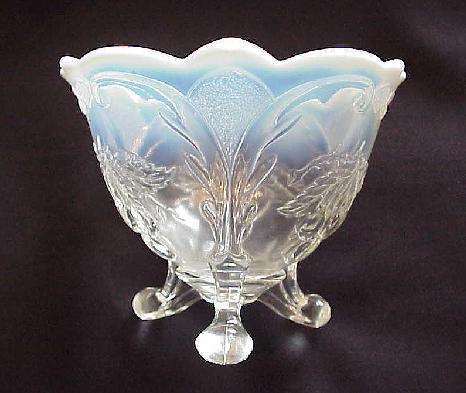 White White Opalescent means clear glass with Opalescent edges. Some companies actually referred to this color as "Flint Opalescent" in their catalogs. "Flint" referred to Clear Glass. Collectors today simply call it "White Opalescent" glass. 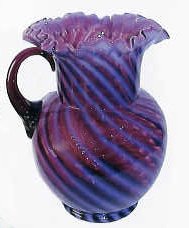 Amethyst. This color was made by the Fenton Art Glass company beginning about 1908 They are the only American company to produce this color during the early 1900's. 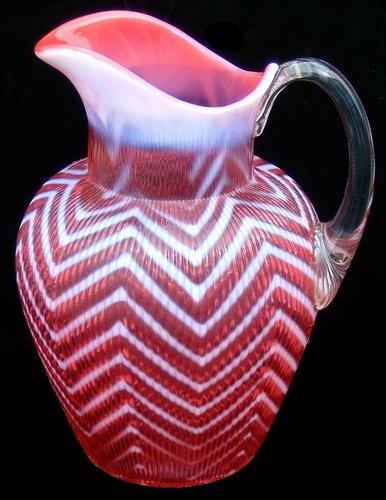 Cranberry Prior to 1921, the only way to get a Ruby or Cranberry color was by using Gold Fulminate in the glass batch. After 1921, the color could be made by using cheaper chemicals. 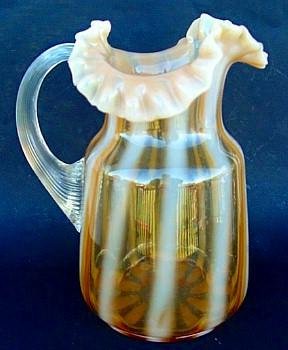 Amber One of the earliest known companies to produce Amber Opalescent glass was the Phoenix Glass company in the 1890's. Then the Indiana Tumbler and Goblet Company of Greentown, PA in 1903. Their color was called Golden Agate. Collectors call it Holly Amber. The factory was destroyed by fire the same year so Golden Agate is very rare to find today. Amber Opalescent didn't appear again until the 1920's and early 1930's. The Fenton Art Glass company produced it for their "Cameo" line. There may be other early companies as well who made this color. |
Click your back arrow